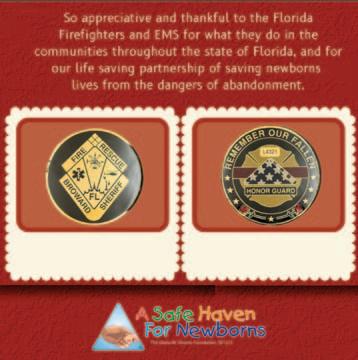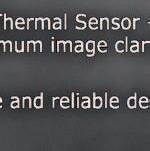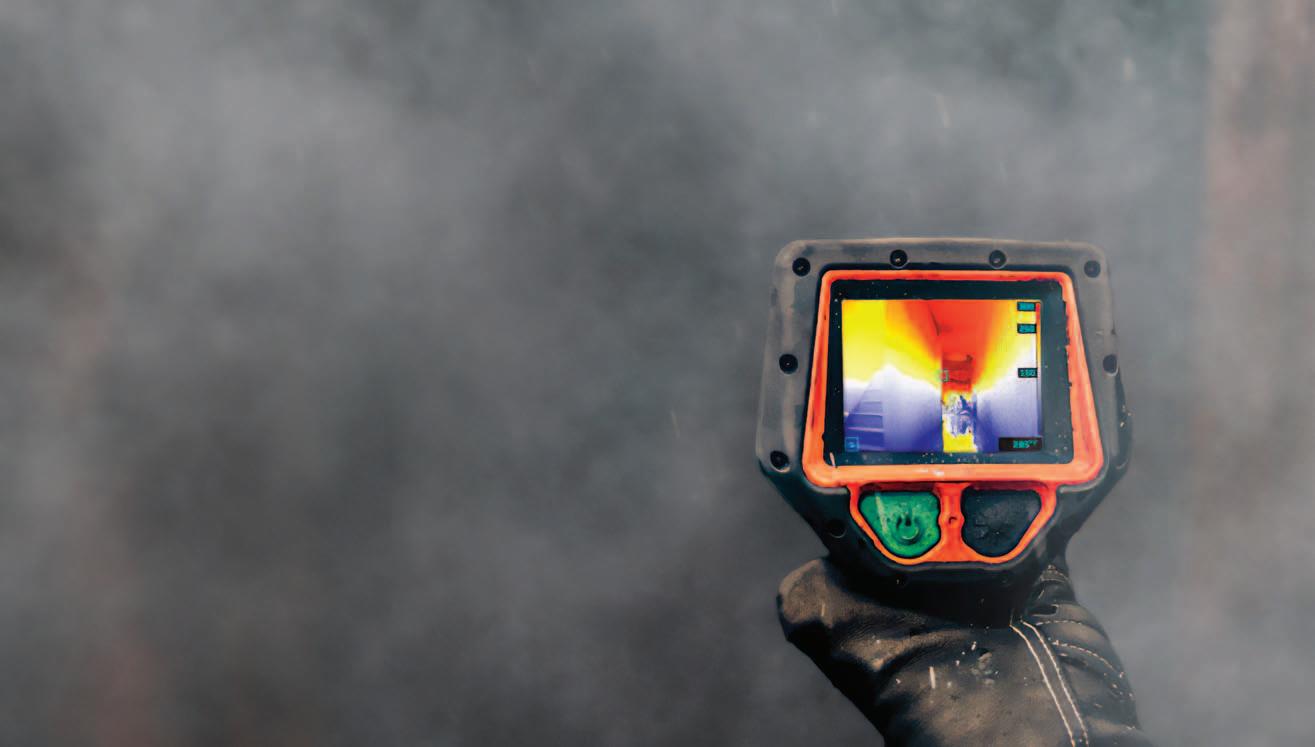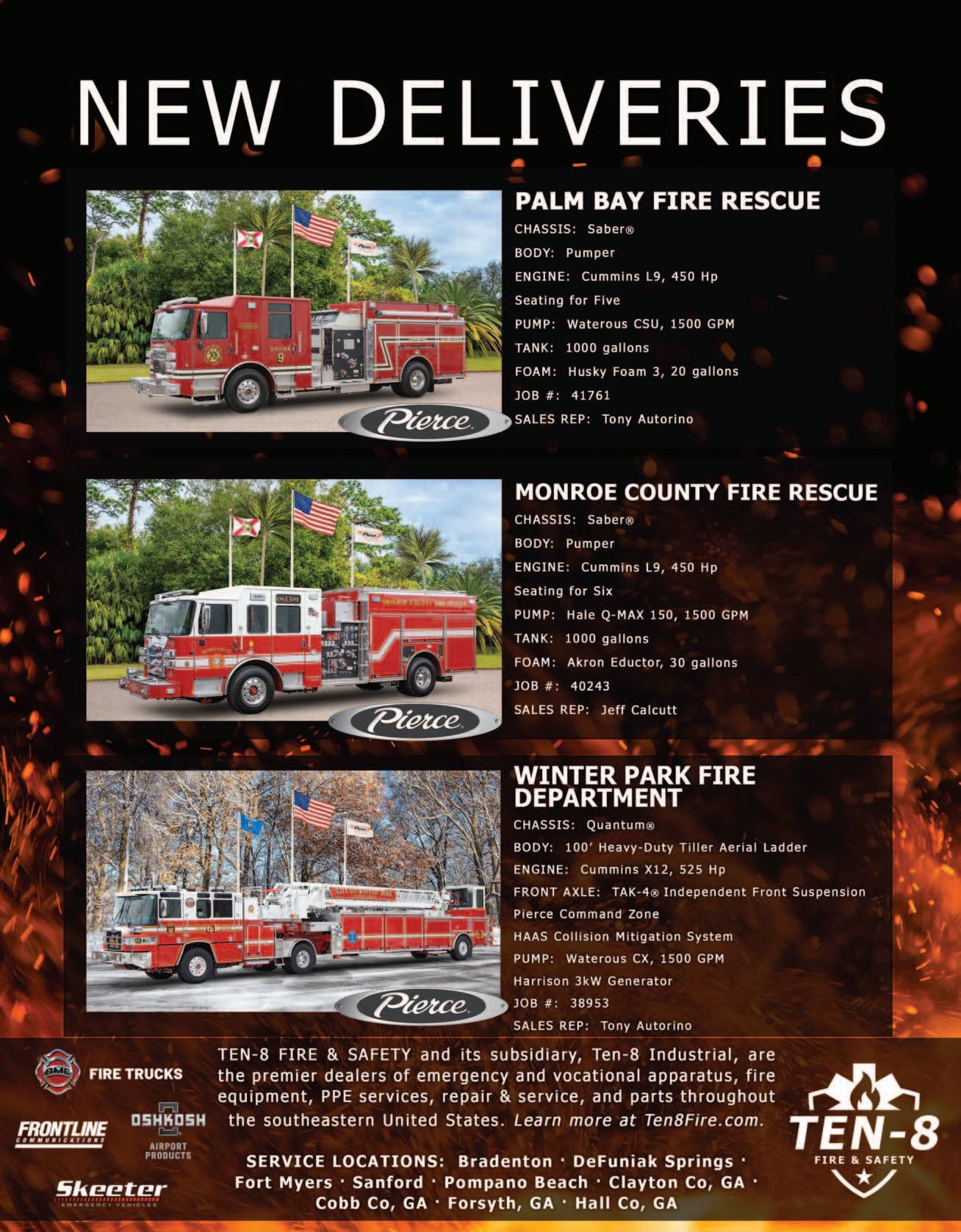





























































Florida Fire Service is the monthly publication of the Florida Fire Chiefs’ Association, provided to Florida Fire Chiefs’ Association (FFCA) members, by the Florida Fire Chiefs’ Association.
Florida Fire Chiefs’ Association
221 Pinewood Drive Tallahassee, FL 32303 Phone:(850) 900-5180
Email: info@ffca.org • www.ffca.org
FFCA Staff
Ngoc Huynh- Executive Director
Denise Holley - Office Manager
Greta Hall - Marketing Communications Manager
FFCA Board of Directors
Michael Choate - President
Trip Barrs - 1st Vice President
Ryan H. Crawford - 2nd Vice President
Harold Theus - Immediate Past President
Carlos Aviles - Secretar y/Treasurer
Jeff Wagner - Northwest Region Director
Brady Rigdon - Northeast Region Director
Michael Johansmeyer - East Central Region Director
Chantal Botting - Southeast Region Director
Ian Kemp - West Central Region Director
Gregory DeWitt - Southwest Region Director
Ngoc Huynh- Executive Director
Cindy Morgan - Foundation Chair
Jeffrey Money - Senior Member
Editorial Submissions magazine@ffca.org (850) 900-5180
Advertising
Scott Leisen, Editor in Chief scott@ffca.org (386) 717-0055
Subscription rate for members is $36, which is included in member dues. Archived electronic monthly editions of Florida Fire Service magazine are available at www.ffca.org. Log in as a member and click on the Publications tab.
Florida Fire Service
February 2025, Volume 33, Number 2 USPS # 016-759
Periodical postage paid in Daytona Beach, Florida, and additional post offices.
POSTMASTER: Send address changes to Florida Fire Service, 221 Pinewood Drive Tallahassee, FL 32303. Statements of fact and opinion are the responsibility of the authors alone and do not imply an opinion on the part of the officers or the members of FFCA. Copyright 2025 by the Florida Fire Chiefs’ Association. All rights reserved. Materials may not be reproduced without written permission.


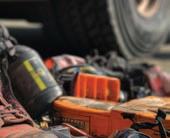
Married Happily

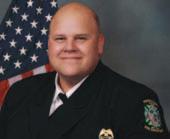
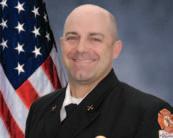

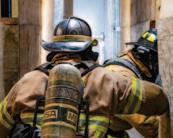

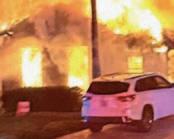


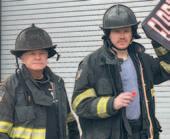








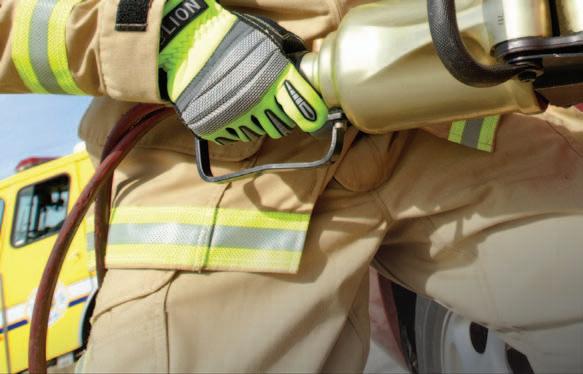
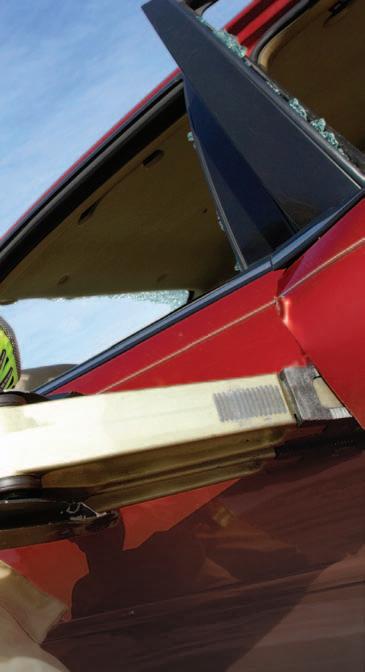


Over the past month of serving as your president, representing the Florida Fire Chiefs’ Association at various events and engagements, one standout moment was the honor of being the keynote speaker at the annual Pierce Apparatus Sales Meeting, held at beautiful Walt Disney World.

From the moment I arrived, the magic of Disney was in full swing (my family and I have always loved Disney). I was greeted in the hotel lobby by none other than Goofy, Donald Duck, and Pluto — a fun and great start to this memorable event. Thank you, Keith Chapman, for your invitation.
The real highlight, however, was addressing a crowd of over 650 sales representatives from across the United States and Canada. In my keynote speech, I shared the experience of purchasing a fire truck through the “lens of a Fire Chief” - a perspective that seemed to resonate deeply with the audience. ??
Now, I was asked to speak because of this presidency and our great state, plus Ten-8 was the host. However, coincidentally, both fire departments that I’ve had the honor of leading as Fire Chief have both purchased Pierce fire apparatus, which added a personal touch to my message. It also provided plenty of material for some lighthearted stories and a full-blown comic routine before I was finished. I’m happy
to say that the audience was laughing throughout the entire speech and provided so much feedback on how “real” it seemed.
I want to extend a heartfelt thank you to Pierce Manufacturing and Ten-8 Fire & Safety for their continued support and sponsorship of the Florida Fire Chiefs’ Association. Your partnership plays a vital role in helping us advance our mission and serve our communities. A special thank you as well to Keith Chapman, President of Ten-8, for the kind invitation.
It was a privilege to represent Florida’s fire service on such a grand stage, and I look forward to more opportunities to share our experiences and strengthen our partnerships. Congressional Fire Services Institute (CFSI) in Washington D.C.
Myself and members of your Board of Directors traveled to CFSI. This trip in particular was especially nice this year, as the plane was landing, it started snowing. It blanketed Washington D.C. with about 8 inches of snow over two days.
While there, we met with key leadership for the State of Florida. I can tell you everyone that we met with and everyone that we spoke with has a love for all of us in emergency services. We spoke in depth about topics that are affecting emergency services on the national stage. The team that we assembled was able to swiftly move conversations and change topics

with each visit making you and the fire service our priority.
I'm extremely grateful for the true friendships that the Florida fire service has among our United States Congressmen and Congresswomen. Thank you to Director Rice and Assistant Director Gatlin for accompanying us through some of the visits and providing such needed leave behinds for their staff members to reference and use as a resource.
The event was two days: the first dedicated to members of the fire service meeting with legislators on the hill, with a couple short opportunities to connect with peers throughout the day; the second was an educational symposium during the day, concluding with a Class-A banquet and awards presentation in the evening. It is so well attended from all over our nation and provides such a healthy and robust platform for all of us to network and collaborate on everything that we have in common in terms of public safety
I would encourage every chief officer in the state of Florida to at least attend this one time in your career.
Now… we head into the Florida House and Senate to work alongside a lot of you for our continued success in the fire service. We hope to see you all there.
A big thank you to all of you for your continued support as I gratefully serve.
Stay Safe, with Others in Mind.




By Rick Spence
February is the month we celebrate Valentine’s Day. Many people, which includes a large number of firefighters, believe it is a made-up holiday for greeting card companies to make additional money between Christmas and Mother’s Day. That is not my perspective and, in an effort to encourage firefighters, this is the first article in a series that is an attempt to strengthen your marriage. Depending on which attorney’s website you look at, 37-45 percent of marriages end in divorce, with over 50 percent lasting less than 7 years. I’m sure being in the fire service increases those percentages. The job changes us over the years and very often, we become more difficult to live with. Firefighters are very reluctant to seek any type of counseling, whether it is mental health, marriage, financial or any other type of counseling. We tend to think we can fix any problem we have, just like extricating someone from a bad MVA or safely extinguishing a fire in a single-family residential structure. Marriage is different. It is something many firefighters have been unsuccessful at. Even though I am not a marriage counselor, I have been married to the same lovely woman for almost 39 years. While our marriage is not per fect, there are several things I have learned over the years that have made my marriage lasting and beneficial for both of us. These are all things that my wife and I pass along to young couples we counsel with and most of these couples have a firefighter in the relationship. The first thing my wife and I agreed upon in our marriage is that we would never use the word divorce, no matter how angry we were
with each other or as a joke. In our mind, it was never an option. That immediately built trust and security into the minds of these young newlyweds that neither one of us wanted this marriage to end. Since divorce was not an option, it made us work through whatever difficulties we faced.
The next thing we pass along to young couples is that you have to be intentional in your relationship. Every fire chief has been intentional in improving their job situation. You have taken classes, received college degrees, taken numerous assessments, gone through thousands of hours training classes and scenarios, among other things, in an effort to become an excellent fire chief. We need to do similar things to become a better husband or wife. Too often, we are not interested in going to marriage seminars or reading books in order to make a strong and healthy marriage. Just as we have to work at making ourselves a better fire chief, we need to work at making ourselves a better spouse. When a thought comes into our head about doing something to benefit our spouse, we need to act on it and DO IT. I used to frequently think about buying flowers for my wife or taking her to a movie. Almost always, something would happen that would distract me or I would decide not to do it. But in my mind, because I thought about it, it would almost be like I had done it. I remember telling my wife that I thought about getting her flowers or doing something nice for her but got busy and ran out of time and was unable to do it. From her perspective, there was not very much intention or action in doing that. I was

much more intentional about staying home and watching college football on the couch. In my mind, thinking about doing something nice was close enough to actually doing it. There was not much intention or action put into my marriage early on. It takes effort to do nice things for your spouse and just like learning about new trends in the fire service, we need to put effort into doing nice things for our spouses. There is no better way to serve and honor your spouse than to lighten their load or encourage them in some way. When the thought comes into your head, act on it and follow through.
Next month I will continue this series with some other practical things to do to help strengthen your relationship with your spouse. Paul wrote in Ephesians 5:25, “Husbands, love your wives as Christ loved the church and gave himself up for her.” That is something we must work at doing in order to build a strong and lasting marriage.
Rick Spence retired as Assistant Chief from the Reedy Creek Fire Department after 30 years. Heis currently the Chaplain for the Florida Fire Chiefs’ Association, Central Florida Fire Chiefs’ Association, Reedy Creek Fire Department, Lake County Fire Department, Clermont Fire Department, Maitland Fire Department, and the Florida Professional Firefighters. He ser ves as Sergeant of Arms for the Florida Professional Firefighters and International Association of Firefighters.He was selected Florida Professional Firefighter of the Year in 2018.He has been married to his wife Alecia for over 30 years



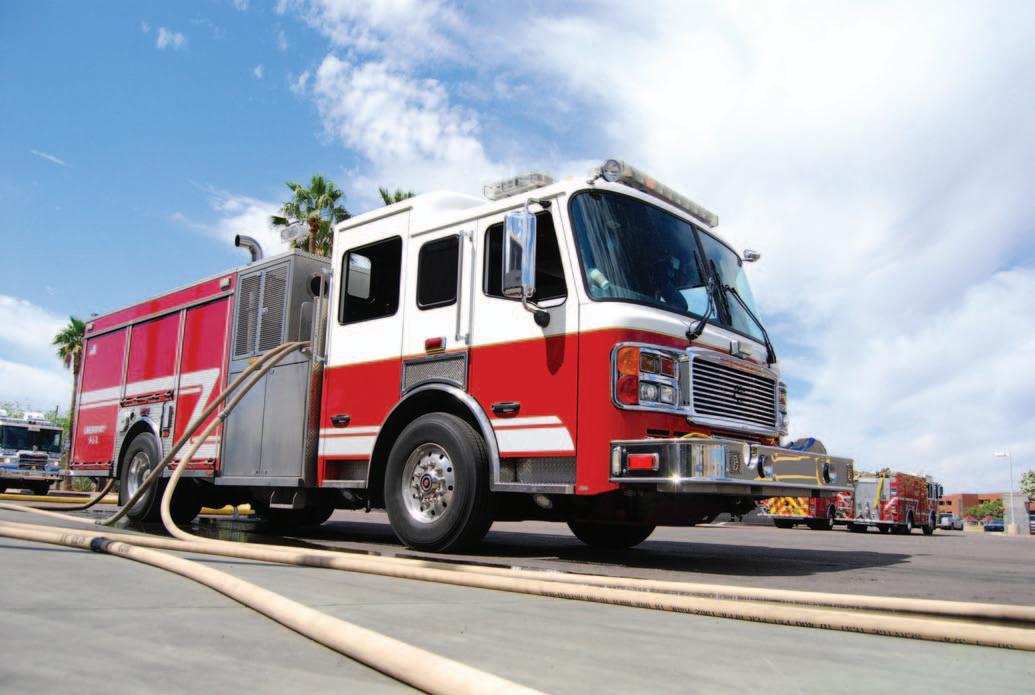
By Michael Tucker, Fire Rescue Chief, Flagler County Fire Rescue

“Lack of empathy in leadership creates a cold, unwelcoming environment.” unknown
Firefighters shouldn’t have to suffer under bad leadership! Unfortunately, there’s a crisis of leadership in today’s world, and the reality is that the fire service isn’t immune. The intentional development of fire officers is something that has not historically been at the top of many fire department efforts. As a result, individuals are ill-prepared to serve in leadership roles and people suffer.
The fire service has generally built promotional systems heavily driven by seniority under the misplaced philosophy that time on the job somehow bequeaths the ability to be an effective leader. To counter this we have created systems called “fire officer” certification in which the belief is that attending a series of five classes and taking a state examination will make someone a magical leader Throw in an associates or bachelors degree and you have the cherry on top. Put all these together and you have a recipe based, check box approach to making leaders.
Don’t get me wrong, there’s value in time on the job. There’s also value in the coursework completed in the achievement of a certification and degree. On one hand its hang out and wait your turn. On the other it’s taking steps to force your way into line. By themselves neither approach works well. The reality is that the answers lie somewhere in between the two approaches.
As a leader, it’s your responsibility to find that “in between” for not only yourself, but those who have chosen to follow you. The challenge is that what works for one person won’t necessarily work for another. You must intentionally create the environment in which people feel safe and can reach their maximum potential. No amount of recipe following will help those you lead become better if they don’t feel safe emotionally, psychologically, and physically.
When people feel safe in all three of these areas, they are willing to push envelopes and take risks. In looking back at Maslow’sHierarchy ofNeeds you will see that safety is one of our basic needs. If your followers don’t feel safe, they will never take the steps to develop relationships and seek accomplishment.
In 2023, Development Dimensions International (DDI) published a report titled 2023 Global Leadership Forecast. As part of developing the report, DDI surveyed 13,695 leaders and 1,827 HR professionals across 1,556 organizations. The report provided a series of best practices and trending issues impacting organizations across the globe and is certainly relevant to the issues facing the fire service today.
Creating an environment in which people can reach their maximum potential is the secret ingredient in becoming an effective leader
Within the DDI report, there is the following series of seven “practices” that, when mixed in with the technical aspects of delivering emergency services, serve to build safe working environments:
1. Listen and respond with empathy.
2. Provide opportunities for personnel to grow and development.
3. Share thoughts and rationale for decisions.
4. Genuinely acknowledge your own failures and challenges.
5. Inquire and care about employee wellbeing.
6. Encourage others to challenge old ways.
7. Recognize the success of team members.
Also sprinkled throughout the report is the subject of culture. Without a strong, positive culture, no amount of strategy will overcome a poorly performing fire department (or shift/station). Building a positive culture is your responsibility and not the leader above you. True, the actions of the people above you may be leading to a poor culture, but you can only control the environment directly around
you. You have the ability to filter what is received by those who follow you. You are the buffer that keeps the poor culture from developing in your team.
The good news is that because of the global dearth in quality leadership, it doesn’t take much to set yourself apart as a leader. – M. Tucker
When you intentionally work to create a positive culture around you, others will want to be part of it. In doing so, your department / shift / station becomes the safe place for people to not only survive but thrive. When you become the officer who is known for building a strong culture and safe working environment, you become the light in the darkness.
In the race to recruit and retain quality firefighters and paramedics, its currently the overwhelming focus to throw money at the issue. Efforts to increase pay and reduce hours worked in a week are the easiest items to focus on, but they’re not the long-term answer. These efforts are certainly worth making, but no amount of money or reduced work schedule will overcome a bad working environment.
Increasing pay and reducing hours worked in a week, without fixing the environment, only means that firefighters and paramedics will be miserable while making more money and working less hours. Unless the culture is fixed, followers will continually be looking for the next best thing. If your answer to the next best thing is to throw money at it, then the next department who offers a little more money will be their next best thing. They will leave you as quick as they came to you.
You must become the leader that creates an environment in which people feel safe, emotionally, physically, and psychologically. Its not someone else’s responsibility. You set the standard, you set the tone, and you lead where no one has dared to lead before.
“Culture eats strategy for breakfast”.
-Peter Drucker

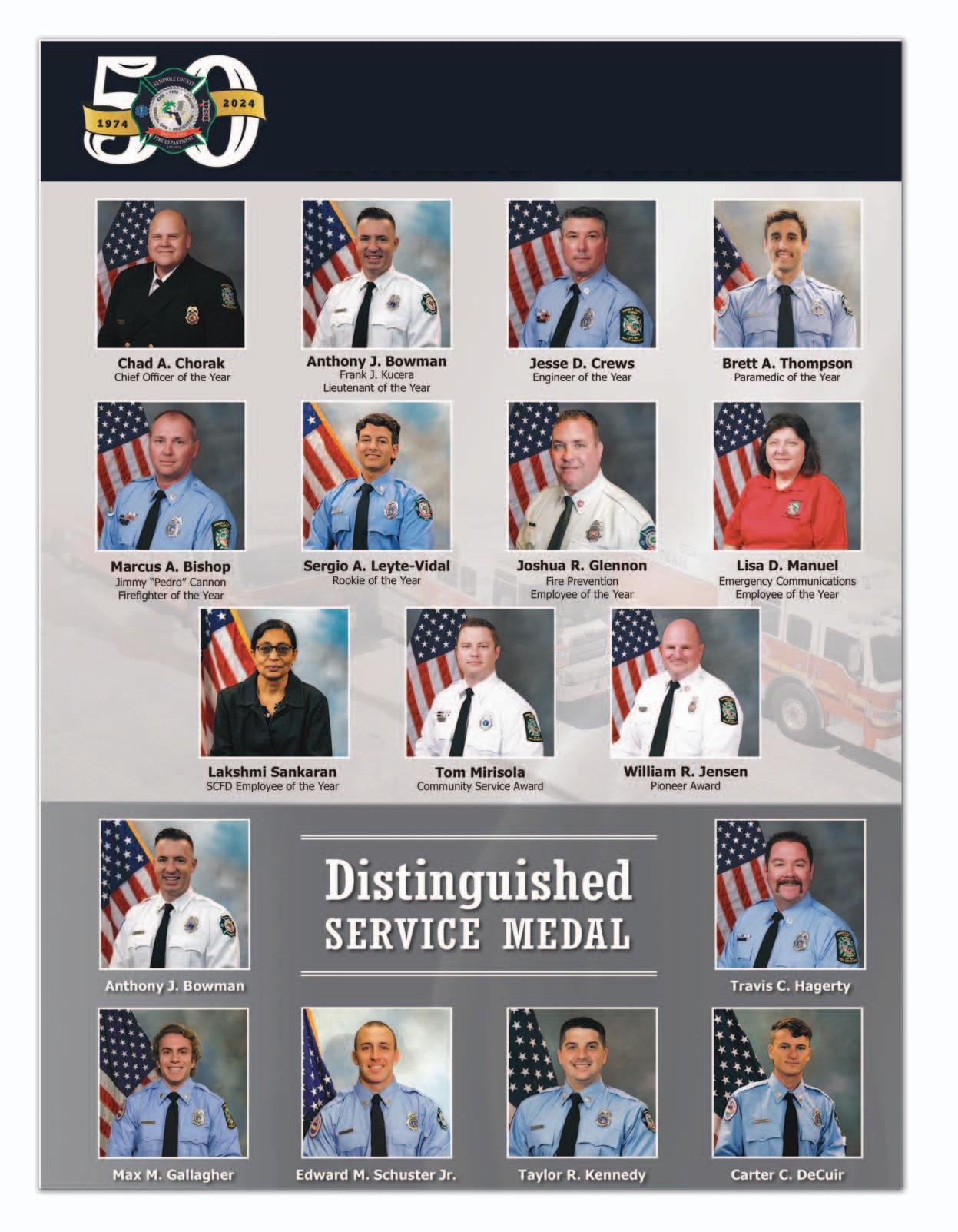

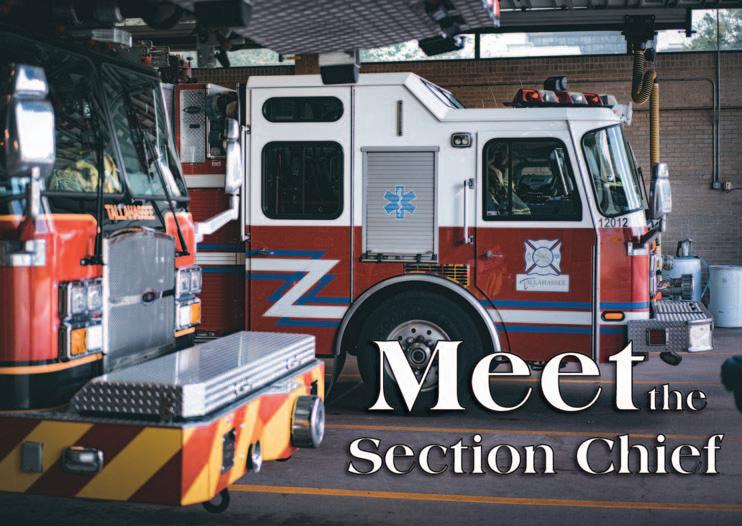
Fire Service Tenure:
Over 20 years of dedicated service Career Journey:

Battalion Chief Troy Anzalone has demonstrated unwavering dedication to the fire service throughout his career. Starting as a firefighter, he has climbed the ranks due to his commitment to excellence, leadership, and passion for public service. He has served as an instructor at the Tallahassee Community College (TCC) Fire Academy, mentoring and shaping the next generation of firefighters. Additionally, he has been an instructor for cadets, ensuring they receive high-quality training to prepare them for the field.
Form of Government & Source of Funding for Jurisdiction:
The Tallahassee Fire Department operates under a municipal government structure, with funding primarily sourced from city allocations, state grants, and emergency services funding.
Population Served & Square Miles
Covered:
The Tallahassee Fire Department serves a population of over 200,000 residents, covering approximately 103 square miles of urban, suburban, and rural areas.
Composition of Organization:
The department consists of highly trained firefighters, EMTs, and paramedics operating from multiple stations across the city. Specialized teams include hazardous materials
(HAZMAT), technical rescue, and urban search and rescue (USAR).
District Equipment:
TFD operates a fleet of advanced firefighting apparatus, including engines, ladder trucks, rescue units, and specialized equipment for USAR operations.
Call Summary:
The department responds to a wide variety of emergency incidents, including structure fires,
medical emergencies, hazardous material spills, vehicle extrications, and disaster response.
Some of the challenges include adapting to the increasing demand for emergency services, ensuring resources are allocated efficiently, and maintaining firefighter wellness and training standards to meet evolving threats.
Chief Anzalone is known for his deep commitment to the community beyond his professional responsibilities. His off-duty contributions include:
Veteran Support:
He volunteers annually at Veterans Village, providing meals to veterans on Thanksgiving and delivering care packages.
Holiday Giving:
Each Christmas, he hosts young adults who cannot return home for the holidays, providing them with dinner and ensuring they receive gifts.
Children’s Charities:
He actively participates in programs that take underprivileged children shopping for Christmas presents.
Firefighter Memorial Contributions:
He played a key role in establishing a planter area around the Tallahassee Firefighter Memorial, ensuring a meaningful and respectful tribute to fallen heroes.

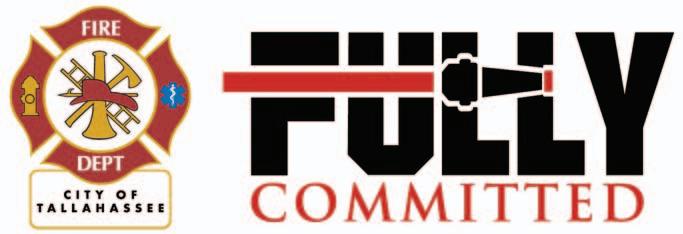
Chief Anzalone works closely with other fire departments, law enforcement, and emergency medical services to enhance regional emergency response efforts. His role in the Urban Search and Rescue (USAR) team has been instrumental in strengthening interagency cooperation during disaster relief and rescue operations.
TFD, under Chief Anzalone’s section leadership, remains fully compliant with NIMS, ensuring a standardized approach to incident management and emergency response.
Chief Anzalone believes the fire service must continue adapting to emerging challenges, including technological advancements, firefighter mental health, and evolving community risk reduction strategies. He advocates for continued investment in training, equipment, and community engagement.
Leadership
His leadership style is one of mentorship, dedication, and leading by example. He is widely respected for his ability to inspire and motivate both new recruits and seasoned firefighters.
Throughout his tenure, Chief Anzalone has witnessed significant advancements in technology, training methodologies, and safety protocols. He has played an active role in adapting TFD’s operational procedures to meet these evolving standards.
According to Chief Anzalone, one of the biggest challenges is balancing firefighter mental health and well-being with the high demands of the job. He emphasizes the need for comprehensive wellness programs to support first responders.
He strongly advocates for increased funding for firefighter training and mental health resources, ensuring that personnel are wellprepared both physically and mentally for the rigors of the job.
Conclusion:
Battalion Chief Troy Anzalone embodies the highest standards of dedication, service, and leadership within the fire service. His commitment to both his department and his community is exemplary, making him a deserving candidate for recognition
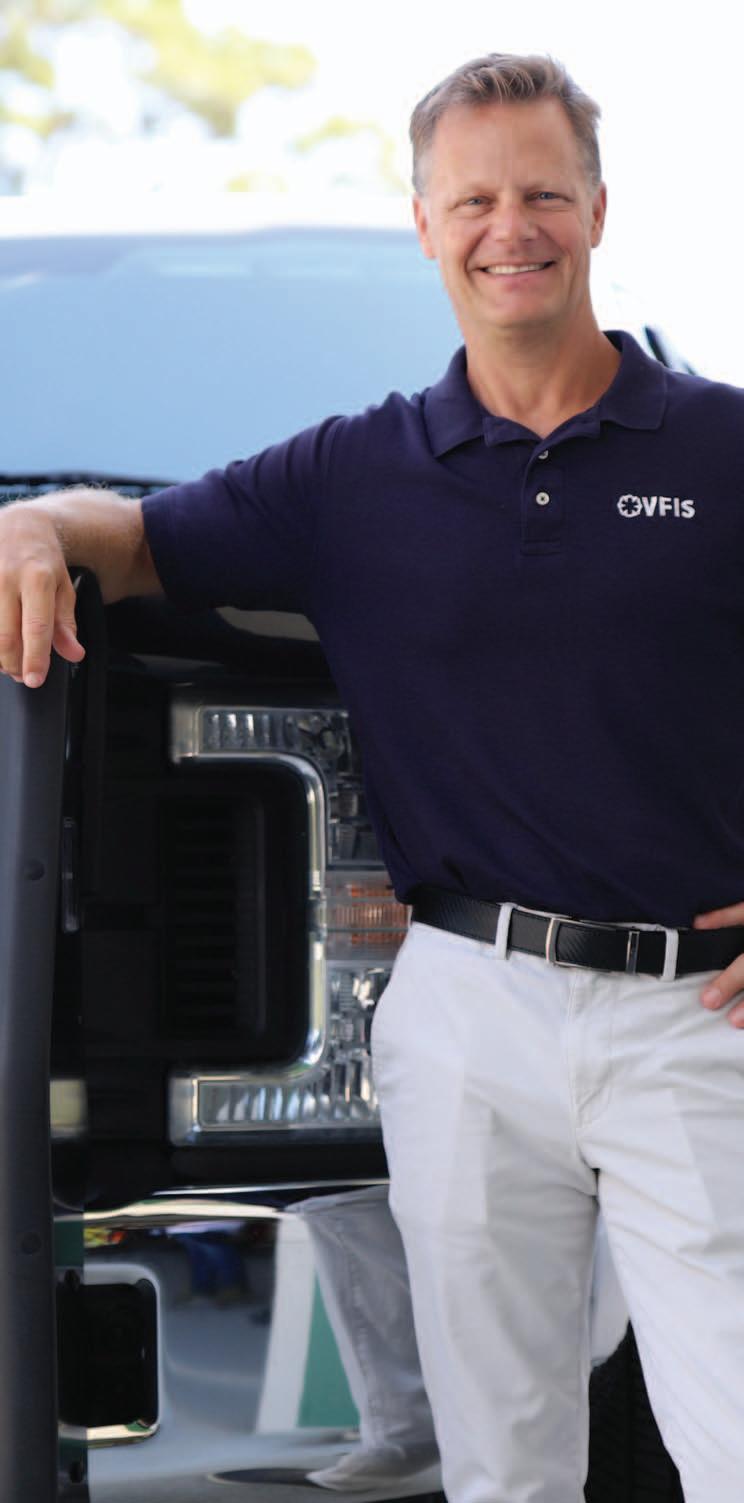
By Adam Hursh
The Staffing for Adequate Fire and Emergency Response Grant (SAFER) program is a pivotal resource for volunteer fire departments across the United States. Managed by the Federal Emergency Management Agency (FEMA), SAFER grants aim to enhance fire departments' capacity to respond to emergencies and improve community safety. My department's experience with SAFER funding demonstrates how these grants can empower volunteer fire departments to achieve transformative results.
The SAFER Grant Program is designed to support fire departments in two key areas: hiring firefighters and recruiting and retaining volunteers. For career firefighters, SAFER grants provide funds to recruit and retain personnel, ensuring compliance with National
Fire Protection Association standards. In the same vein, the grants offer volunteer fire departments financial resources to strengthen recruitment, training, and retention efforts.
Volunteer fire departments often face challenges such as dwindling membership, limited budgets and increased service demands. SAFER grants directly address these obstacles, enabling departments to enhance operations and ensure adequate staffing levels.
Like many small volunteer fire departments, we face the common challenges the SAFER Grant Program is designed to address - limited resources, recruitment struggles and retention hurdles. However, through the strategic use of SAFER funding, we have overcome these obstacles and significantly enhanced our

department's capabilities.
The following initiatives highlight the transformative impact of these grants on our operations and community engagement.
1. Recruitment and retention program development Before applying for funding, we conducted a thorough assessment to identify our immediate needs. Recognizing the importance of attracting new volunteers and retaining experienced members, we brainstormed various ideas and aligned them with approved projects outlined in the notice of funding opportunity. This strategic approach laid the foundation for a robust recruitment and retention program.
We created a plan incorporating various strategies to recruit new firefighters while providing incentives to retain our current members.
2. LED sign The initial step in our plan
involved securing funding for an LED sign to aid recruitment efforts. We planned to position the sign near our station along a state highway with an average daily traffic of 2,000 vehicles.
This sign's secondary advantage was its utility in promoting fire department events and sharing fire prevention tips. However, FEMA guidelines require that at least 75% of its usage focus on recruitment and retention activities.
3. Mailouts. For years, our department budget relied on an annual fundraising letter sent to every address in our primary response area. While this letter typically included a brief mention of joining the fire department, we realized we were missing a valuable opportunity to deliver a focused recruitment message to every resident in our district.
To address this, we applied for funding to support a biannual mailout over four years. Instead of a brief blurb in a fundraising letter, we now produce a tri-fold brochure and a postcard highlighting our department and the benefits of volunteering.
4. Training We wanted to provide our firefighters with opportunities to attend conferences and training sessions that were previously out of reach due to our limited budget. Prior to this, the only way they could participate was if they covered the costs themselves.
To make these training opportunities possible, we applied for and secured SAFER funding to send groups of our firefighters to events such as Firehouse Expo, FDIC, and various county fire tactics conferences. With all expenses covered, our firefighters gained valuable experience and had the chance to network with other firefighters from across the country.
We also secured funding to enhance our technical rescue training, focusing on areas such as rope rescue, confined space rescue and structural collapse rescue. This advanced training has already proven invaluable for serving our community.
5. Monetary incentive To encourage sustained participation, we launched a volunteer incentive program supported by SAFER funding. The program offers compensation for attending calls and training sessions, which has boosted morale among current members and made our department more attractive to potential recruits.
To maintain fairness, we implemented station staffing requirements, ensuring participants contribute time to the department beyond simply responding to calls for compensation. Since the program's inception, we have observed a significant increase in overall staffing hours and a noticeable reduction in response
times.
6. Digital recruitment program One area where we recognized a gap was in our department's digital presence for recruitment. While we maintained a Facebook page, our outreach efforts were limited to direct contact and mailouts, leaving much potential untapped. With the funding we received, we engaged a third-party service to expand our digital footprint. This included creating a dedicated website, implementing Facebook marketing campaigns, and developing a QR code that directs potential recruits to our application process. Although this initiative is still relatively new, it has already generated increased interest from prospective volunteers.
The impact of these SAFER-funded projects is evident in the enhanced capabilities of our department and the stronger connections within our community. Key benefits include:
1. Increased membership Our active volunteer roster has expanded significantly, providing reliable staffing for emergency responses and alleviating burnout among team members.
2. Enhanced training and readiness Access to advanced training opportunities has empowered our volunteers with the skills and confidence to execute safer and more effective emergency operations.
3. Stronger community engagement Targeted outreach initiatives, such as mailouts, events, and digital campaigns, have bolstered community goodwill, increased volunteer interest and secured vital support for department activities.
4. Modernized recruitment strategies Investment in digital recruitment tools,

including a new website, social media campaigns and QR code applications, has revolutionized how we attract and connect with prospective volunteers, ensuring a steady influx of talent.
Our success with SAFER grants underscores the transformative potential of this federal program. We have positioned our department as a resilient and capable organization by addressing recruitment and retention challenges, enhancing training and fostering community connections.
Volunteer fire departments across the nation can draw inspiration from our experience and leverage SAFER grants to meet their unique needs and ensure the safety and well-being of their communities.
Not sure where to start with your SAFER application? Lexipol’s team of expert grant writers and project managers can position you for success in winning the funding your agency needs.
Adam Hursh is a seasoned fire service professional with 23 years of experience. He is currently the deputy fire chief at the Gilt Edge Volunteer Fire Department and a full-time lieutenant with the Piperton Fire Department, both in Southwest Tennessee. Adam holds a Master of Public Administration from Columbia Southern University and is recogniz ed as a Chief Fire Officer by the Center for Public Safety Excellence (CPSE). He is also renowned for securing numerous local and federal grants for his departments and consulting with other fire and EMS agencies on grant submissions.

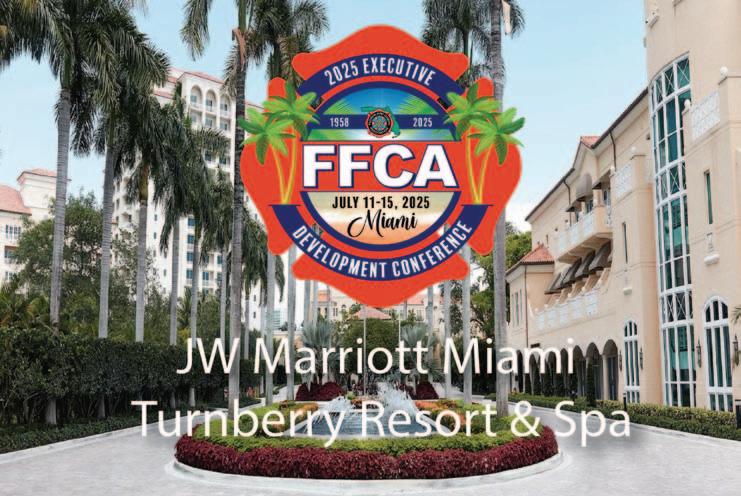
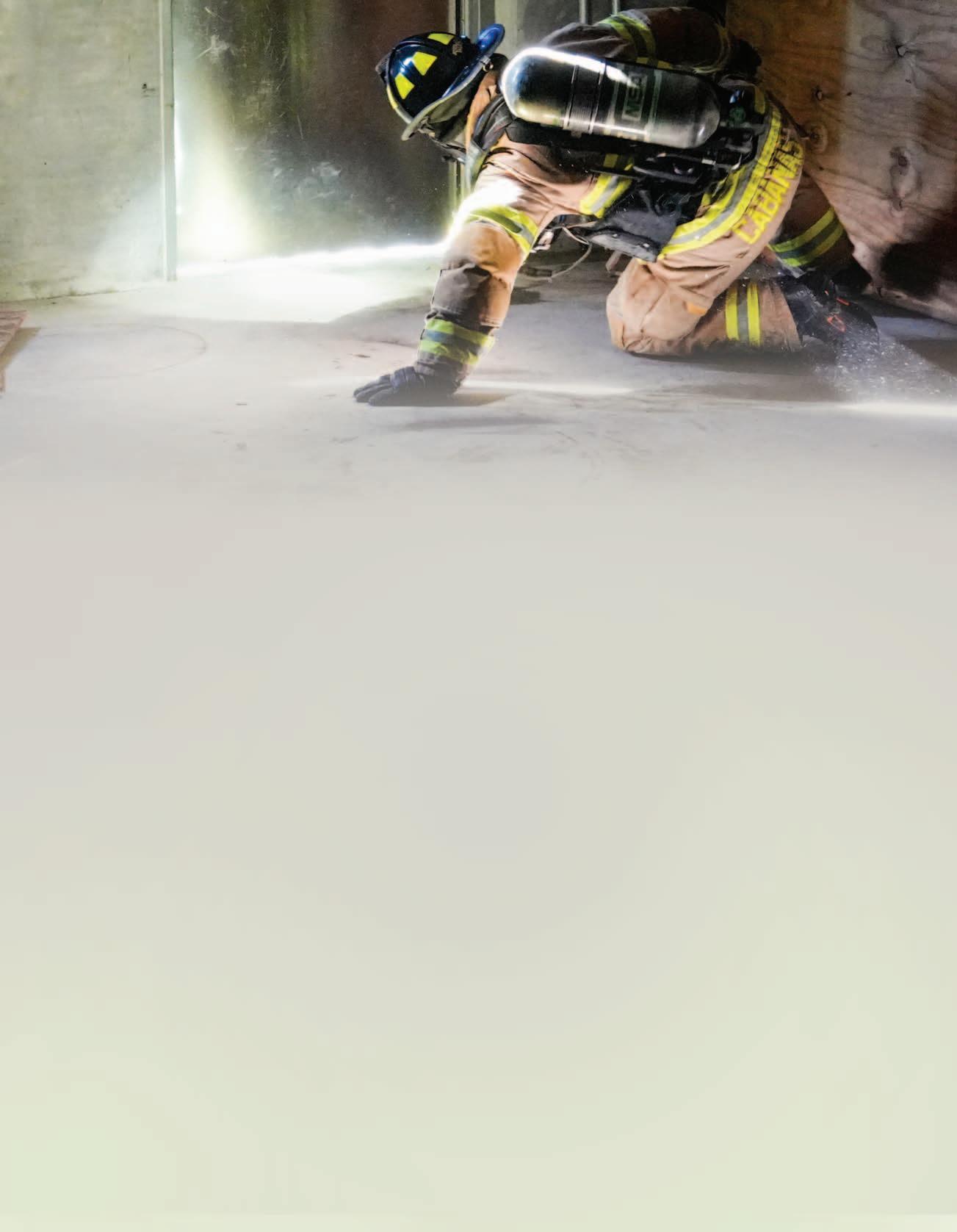
The Florida Fire Chiefs Association (FFCA) has embarked on a transformative journey to enhance fire service training across the state. In 2024, the FFCA Board of Directors initiated a comprehensive realignment of its Training and Education Section, formerly known as the Florida Society of Fire Service Instructors. This restructuring aims to assemble a diverse group of subject matter experts to drive Florida’s fire service forward through cutting-edge training and education.
In October 2024, Assistant Chief Aaron Rhodes of the Orlando Fire Department was appointed Chair, with Assistant Chief Nicholas Morgado of Miami-Dade Fire Rescue serving as Co-Chair. Under their leadership, the section adopted a regional approach, aligning with Florida’s seven Statewide Emergency Response Regions. Additionally, key liaison positions were established to bridge relationships with critical partners. This approach ensures statewide representation and access to specialized expertise in all areas of fire service training.
The mission of the Training and Education Section is to serve as a collaborative hub for subject matter experts in fire suppression, emergency medical services, special operations, and the incident command system. The section is committed to providing guidance, support, and expertise to enhance training opportunities for Florida’s fire service personnel.
One of the key objectives of the Training and Education Section is to stay at the forefront of evolving training methodologies. The section maintains strong partnerships with
agencies such as the State Fire Marshal and the Florida Department of Health, ensuring that training programs meet the highest standards and incorporate the latest advancements in fire service education.
Additionally, the section prioritizes professional development, emergency management, and specialized training. By restructuring with regional representatives and key liaisons, the section is better equipped to address training challenges and advance fire service education statewide.
A critical role of the section is supporting FFCA events, particularly the Florida Fire and EMS Conference. Responsibilities include reviewing course submissions, selecting presenters, and curating educational content for the annual winter conference. This ensures that Florida’s fire service professionals receive top-tier training experiences.
A major focus of the section is serving as a resource for newly assigned training officers, providing them with mentorship, guidance, and access to seasoned professionals. Training officers are encouraged to engage with their regional representatives or any member of the section to enhance their professional development and training initiatives.
Meet the Leadership Team:
Chair
Assistant Chief Aaron Rhodes
Orlando Fire Department
Co-Chair
Assistant Chief Nicholas Morgado
Miami-Dade Fire Rescue
Region 1 Representative
Deputy Chief Blake Good
Ocean City Wright Fire Control District
Region 2 Representative
Captain Brittany Butler
Tallahassee Fire Department
Region 3 Representative
Battalion Chief David Squires
Jacksonville Fire Department
Region 4 Representative
: Chief of Training David Dittman
Tampa Fire Rescue
Region 5 Representative
Division Chief Payton Jones
Melbourne Fire Department
Region 6 Representative
Assistant Chief Matthew Trent
North Collier Fire Control and Rescue District
Region 7 Representative
Battalion Chief Oscar Rodriguez
Margate Fire Department
Each of these individuals brings a wealth of experience and dedication to improving fire service training across Florida. Their collective expertise will propel the section’s efforts in enhancing educational programs, refining training techniques, and supporting fire service professionals statewide.
The FFCA Training and Education Section is steadfast in its commitment to shaping the future of fire service training in Florida. Through collaboration, innovation, and unwavering dedication, the section will continue to provide leadership and support, ensuring firefighters are equipped with the knowledge and skills they need to excel in their careers.



By Elyssa Walterson, Communications Assistant, Orange County Fire Rescue
On Wednesday, January 29, 2025, Orange County Fire Rescue participated in a large-scale active shooter drill, located at the Orange County Convention Center, in collaboration with Orange County Sheriff’s Office and the Cybersecurity and Infrastructure Security Agency. The exercise was designed to allow first responders to test and evaluate their emergency plans to stay prepared in the event of a real emergency Members of Orange County acted as victims and perpetrators in the shooting scenario, and first responders were able to react to the scene accordingly, uncovering any room for improvement in their procedures. The Orange County Convention Center is one of the largest convention centers in the country, so having solid, successful emergency plans is a crucial part of keeping the central Florida community safe.
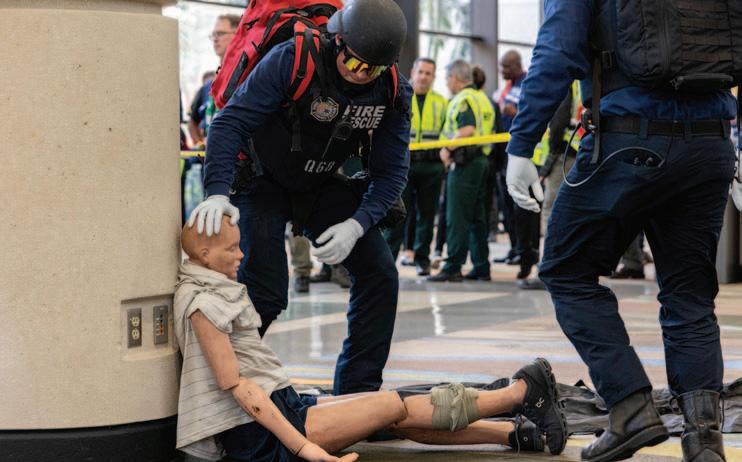








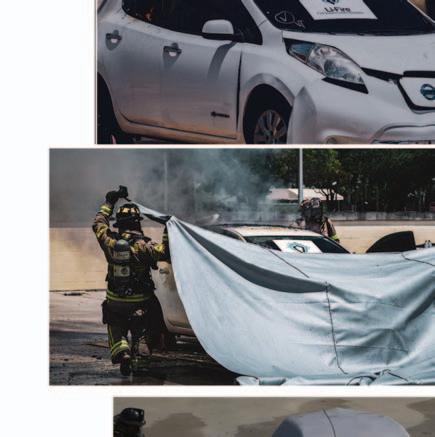
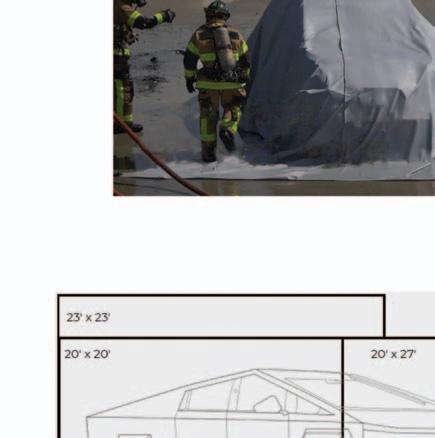



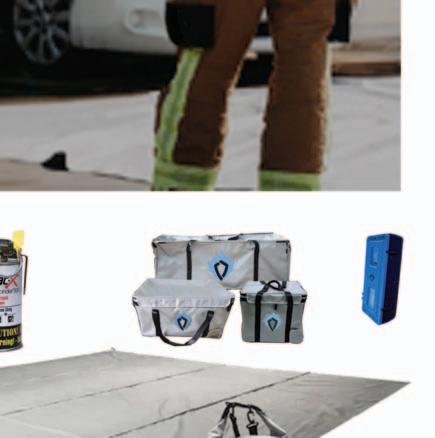
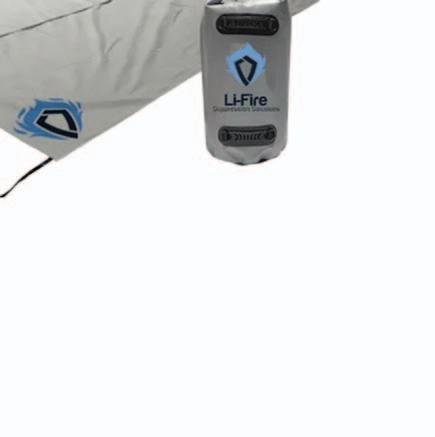

By Jenn Samsel (Independent Journalist) and Chris Naff, Public Information Officer, St. Johns County Fire Rescue
The stadium was excited as fans filled the seats, their cheers echoing into the night, united for an extraordinary cause. The energy was electric, creating a truly unforgettable atmosphere.
On Thursday, February 13, the St. Johns County Sheriff's Office and St. Johns County Fire Rescue held their second annual "Fight Night" boxing charity event at the St. Augustine Amphitheater in St. Johns County.

The event raised $50,000 for two great causes: Diamond of Dreams and the Police Athletic League (PAL) in St. Johns County. Over 2,000 people attended, and 15 boxers participated. Ultimately, the


sheriff's office won nine rounds, while fire rescue won six.
The event began with a moment of silence to honor all the fallen heroes led by Father Matt Marino of Trinity Parish. He offered a prayer for the protection of all first responders as they serve and protect the community, expressing gratitude for the firefighters who saved his life last year.
Sheriff Rob Hardwick of the St. Johns County Sheriff's Office officially opened the ceremony,
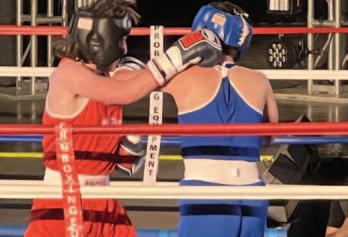
followed by a brief comment from St. Johns County Fire Rescue Chief Sean McGee.
St. Johns County Rescue Fire Chief Sean McGee stated, "Tonight was epic. I don't know if you could tell out of my voice I've been screaming all night long, but I've never been a part of an event like this...come out here and raise money for this great charity. $50,000 is amazing. The fighters were great fights all night long. I'm proud of my guys and this event overall.
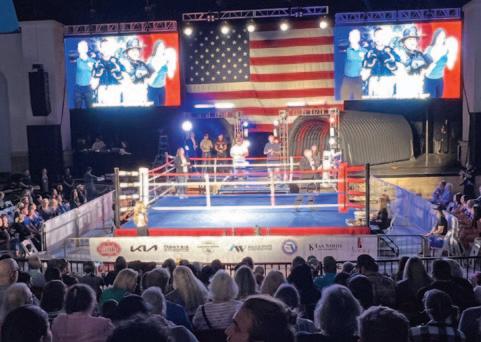

He continued, "Get ready for next year because it's going to be even bigger. Come on out next time if you didn't make it this time".
Sheriff Hardwick stated, "Oh my goodness, it was amazing for our community to come together and show the partnership, the relationship with St. Johns County Fire and Rescue, of course, and our other partners in the boxing."
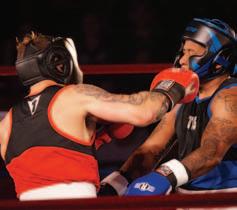
"We raised so much money for Kendall Hardwick and her Diamond of Sheriff Harwick said.
Last year, approximately 500 people attended the first boxing charity event at the Ketterlinus Gym Community Center in St.
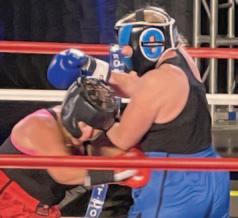
Augustine. They are now looking to host the third annual boxing charity event, making it a yearly tradition.
The Diamond of Dreams is a special needs baseball field designed for individuals with disabilities, providing them an opportunity and a space to play baseball. Additionally, part of the proceeds supports the Police Athletic League to help benefit the youth.
Thank you to all the sponsors, judges, boxers, volunteers, supporters, and first responders who made the event successful.
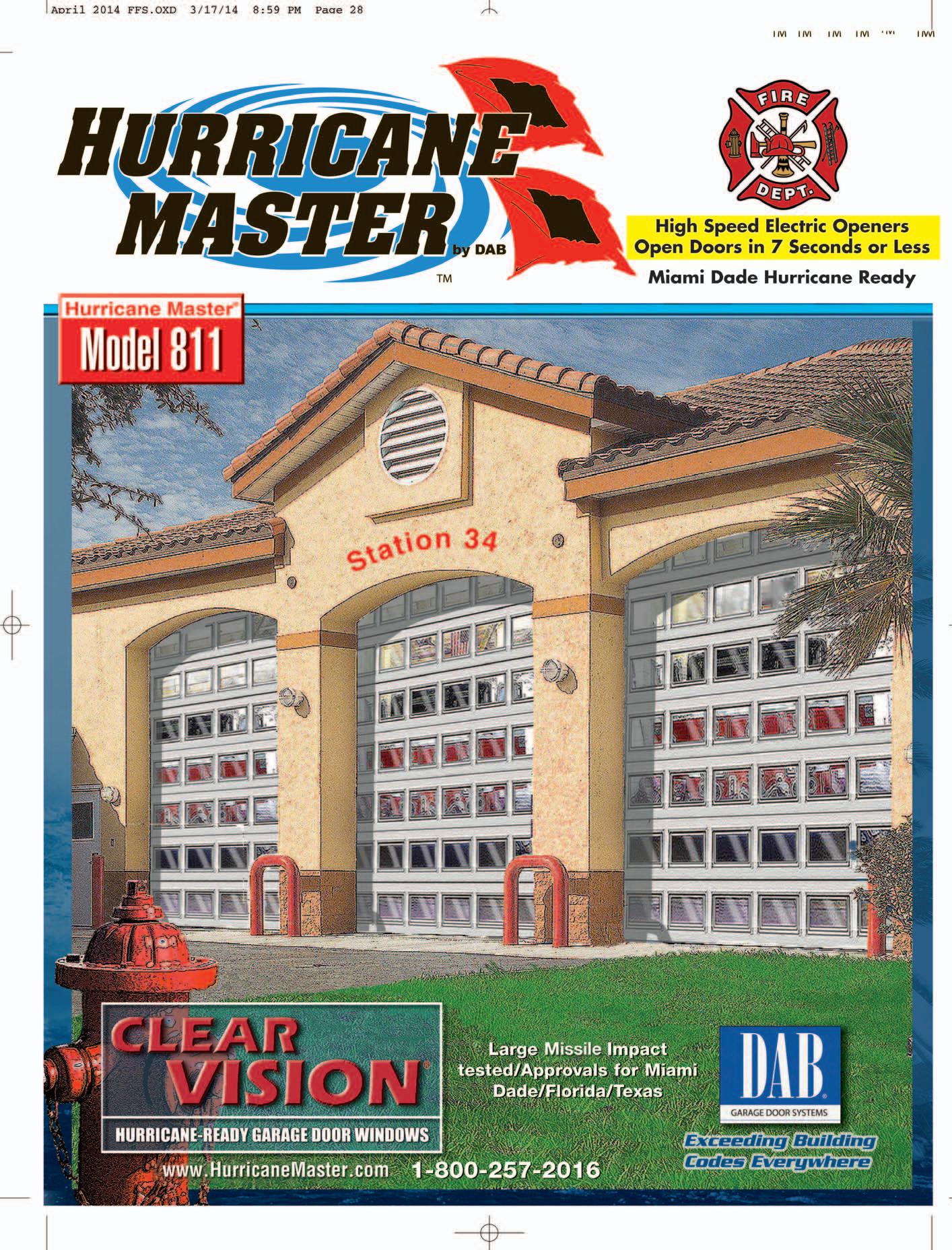
By Mackenzie McClintock, Public Information Officer, South Walton Fire District
What does culture mean to you? For a group of Palm Beach County firefighters, it’s more than just the set of values and beliefs they hold, it’s also sharing the knowledge with others to better the communities they serve.
Their mission to develop a specific kind of culture has been growing steadily through time, effort, and their passion for enhancing fire service tactics. At the start, they developed their vision for rapid, aggressive searches by training their own crews at the company level, which turned into providing department-wide training in Palm Beach County.
In January 2025, their mission took a big step
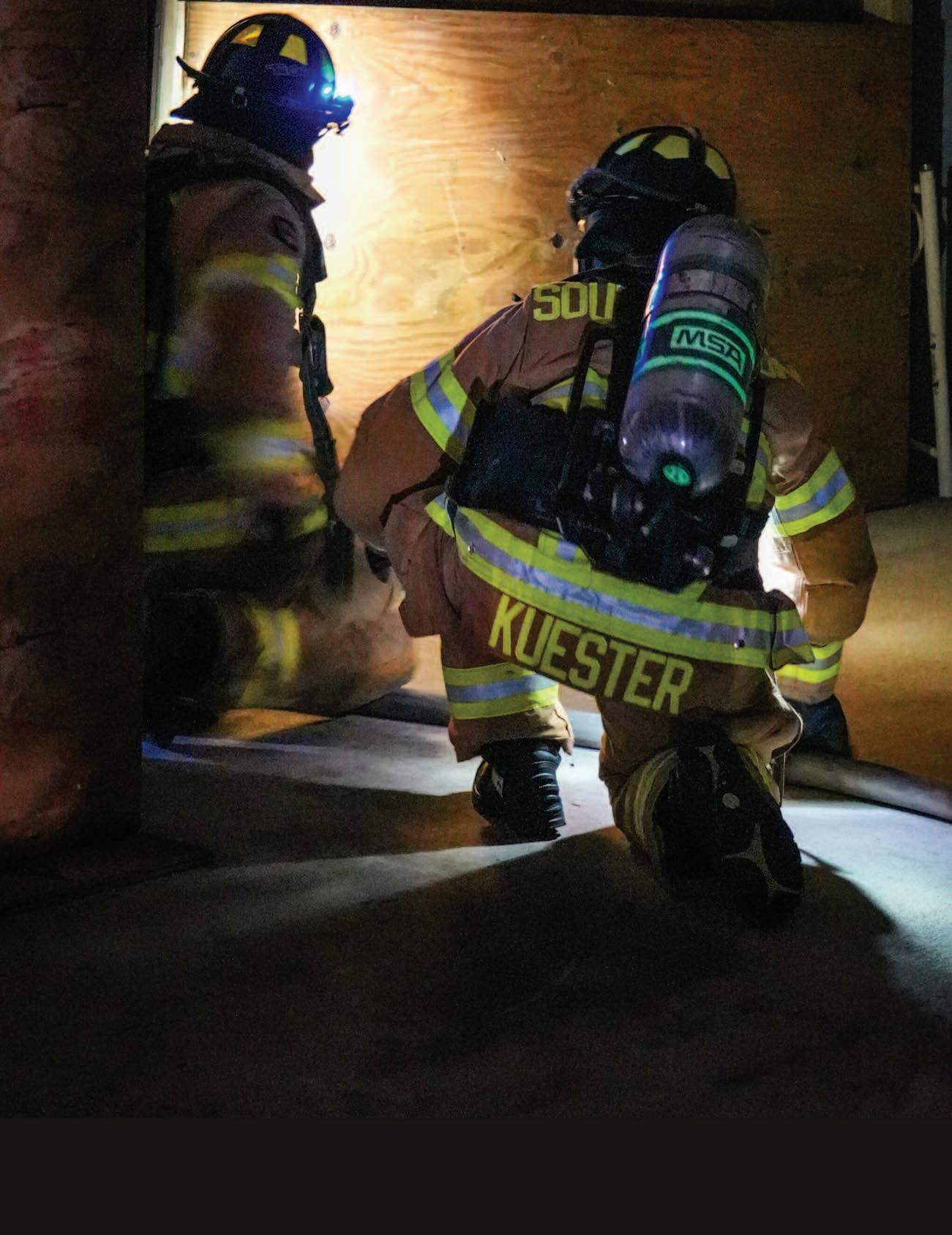
forward by flourishing into the first of hopefully many classes they instruct for fellow fire departments, titled “Search Culture.” Just how big was this step? With the support of PBCFR leadership, it required them to travel more than 500 miles and into a different time zone
Once they arrived in Santa Rosa Beach, Florida, the PBCFR training cadre combined with an instructor from Holley-Navarre Fire District to present the culture-focused, multi-day event to the South Walton Fire District.
The class included hands-on and classroom training environments, emphasizing culture, leadership, and effective search tactics based on
See SEARCH page 26

SEARCH continued from page 25
fireground experience. Firefighters covered and drilled three specific search scenarios including: Vent/Enter/Search (VES), searching with a thermal imaging camera (TIC), and searching from a hose line. The events included live fire exercises with time to deconstruct each repetition with a “hotwash,” discussing what went well as well as areas for improvement.
More than 20 SWFD firefighters were in attendance and voiced their appreciation for the class, the knowledge each instructor shared, and the insight gained in implementing strong search tactics.
Ultimately, this training was an opportunity for firefighters to make themselves better for
the residents and visitors of their jurisdiction. This first class means the culture surrounding aggressive search tactics has planted firm roots. With the right time, investment, and opportunity, these roots have the potential to spread statewide and positively impact departments of all sizes.
SWFD thanks the training cadre from PCBFR and HNFD for their dedication and strong work. The involved instructors and coordinators who made the Search Culture class a success include Battalion Chief Jason Martino, Captain Ron Lowe, Lieutenant Chris Lowe, Firefighter Sean Ojeda, Driver/Operators Daniel Naughton and Phillip Grunder, as well as SWFD Training Chief DJ Stone.

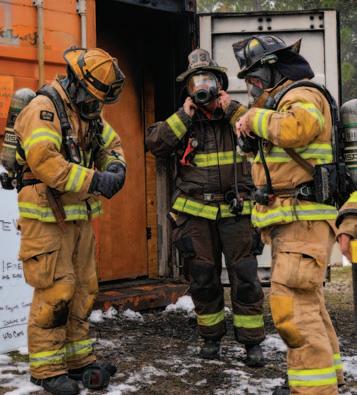
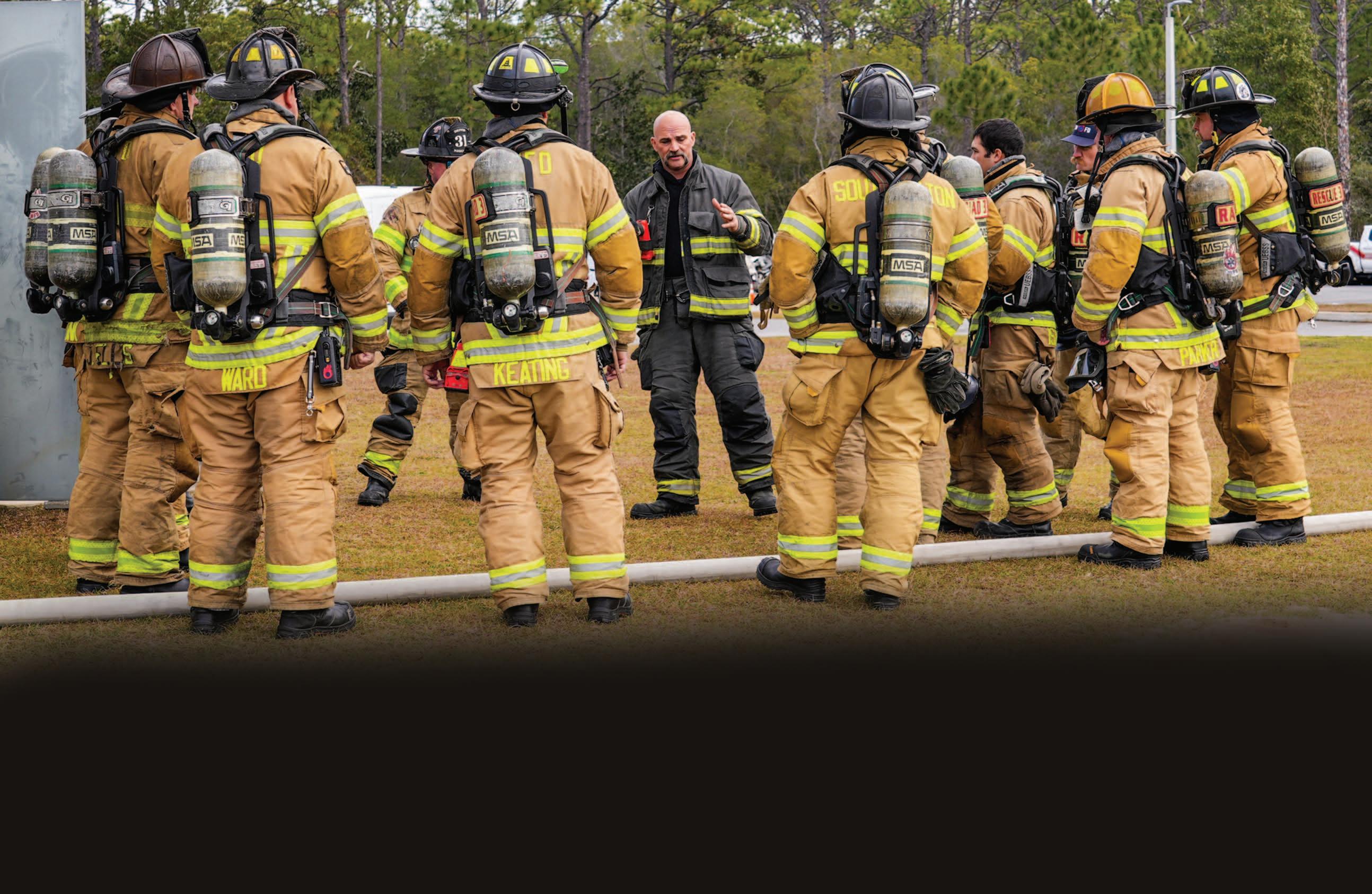




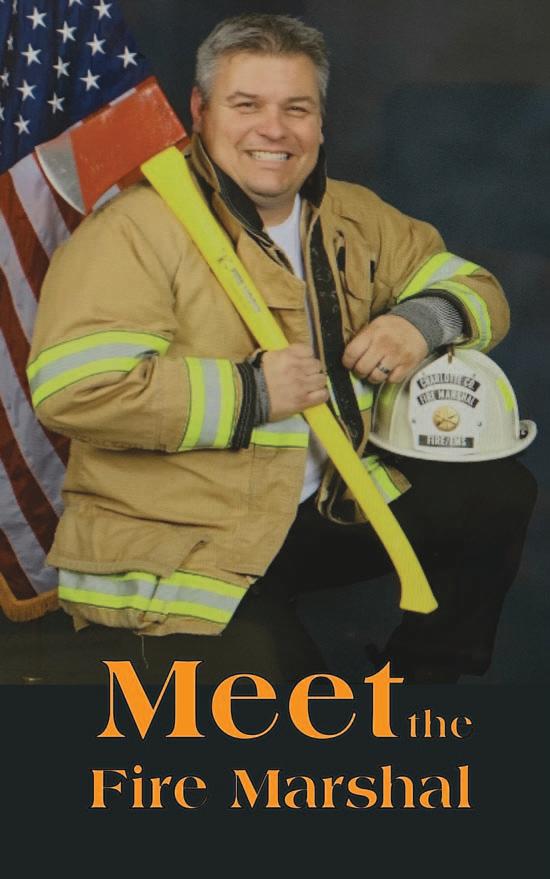
Fire service tenure:
27 years
Career journey:
I started out as a volunteer firefighter in 1997 with the Pleasant Grove VFD in Escambia County, Florida. I went to Pensacola Junior College to obtain my Fire Inspector Certification in 1997. I moved back to Fort Myers where I began my career as a Fire Inspector with Matlacha – Pine Island Fire & Rescue. I later accepted a position with Bonita Springs Fire Control & Rescue where I locally completed Fire Fighter Minimum Standards. In 2013, I became the Fire Marshal for Charlotte County Fire & EMS and became the SW Director for FFMIA in 2024.
Population serviced & square miles:
Charlotte County covers approximately 210,000 year-round residents and protects about 750 square miles
Composition of our fire prevention division:
Fire marshal, deputy fire marshal, senior administrative assistant, plan examiner and five fire inspectors
Describe leadership style:
I have a very open-door policy with my staff, and I do not micromanage my division. I allow staff to make decisions with the guidance provided. I feel this allows for a more ownership approach and allows for growth while letting them know I am here to help. I also try to encourage staff to reach their educational goals, so they can advance their career whether with us or another department in the future.
What are the most challenging issues facing your fire prevention division today?
Technology: It’s hard to keep up with the fast pace of changing technology. From fire alarms to electric vehicles and everything in between, I try to have the Inspectors engaged as much as possible in any new technology.
Staffing: Even though our department has been proactive in hiring staff, we cannot keep up with the growth in our county. We are constantly looking for ways to reach our goals.
How has fire prevention changed during your career?
The biggest change is technology. When I started it was paper, paper, paper. Sometimes we had to come back to get signatures and give copies, and there were in person classes for everything. Now, we use an iPad for inspections, look at plans on site, and have virtual classes which allows more staff members to attend.
I also believe that fire prevention is taken more serious now. In my department, our crews know they can reach me anytime to help them in all areas. Some of these may be false alarm issues, fire investigations, or miscellaneous things they see while out that may need attention right away.
How does your division accomplish training?
We try to reach our education goals several ways:
• Vector solutions
•Online classes
•Traditional in person classes
• In house training through our training division
•Monthly staff meetings
During yearly evaluations, we have the fire inspector pick two educational goals, and we try to help them meet those goals.
What are some unique aspects of your division?
Our division conducts plan review and new construction inspections for two neighboring jurisdictions within our county
How have the current economic times impacted your fire prevention division & how are you doing things different today because of the economy?
Implement and update a fee schedule.
Make fire prevention staff more valuable.
What I mean by that is, have staff obtain more certifications (firefighter, EMT, fire code admin., etc.). This way the department can see/use them for more than an Inspector.
What do you look for in a new employee?
•Team player
•Someone willing to learn.
•A self-motivated, go-getter.
If a person comes in with these three attributes, we can teach them how to become a great fire inspector.
What is the future for fire prevention as you see it?
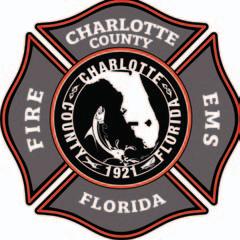
Technology, technology, technology. I believe that there is going to be a more efficient way to conduct fire inspections, plan review and public education. I’m excited to see what the future holds.
Do you have a favorite book or quote?
“There is no limit to the amount of good you can do if you don’t care who gets the credit.”
Ronald Reagan

By
The residents of Speedville were filled with excitement as the community celebrated the opening of its fifth fire station. This muchanticipated facility provides a permanent housing solution for firefighters and promises to enhance public safety significantly. With this new station, residents will benefit from faster response times, ensuring that help is just moments away in emergencies. Adding a fulltime firehouse represents a vital step forward in protecting the community, fostering a sense of security among its members and a lower ISO rating.
On January 31, Bradford County officials held a ribbon-cutting ceremony to celebrate the opening of Station 10 in Speedville. The fire department bays, which were constructed in 2017, now include new living quarters for fulltime EMS and firefighters.
In 2020, Bradford County transitioned from small-town volunteer fire departments to a countywide paid fire department.
"In 2016, the Keystone Heights Volunteer Fire Department signed over $1.2 million worth of equipment to Bradford County Fire Rescue. That came with $75,000 towards the new building. Santa Fe College, who donated the land. Vince Esson from the Keystone Heights
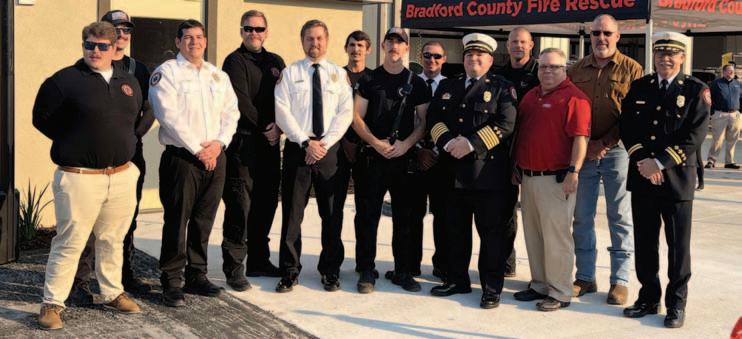
RV Resort donated $150,000 to complete the station with the new living quarters," said Danny Riddick, Bradford County Commissioner.
"I also wanted to thank everyone who contributed, and I cannot thank you enough," said Riddick."

"This is a milestone for Bradford County and a significant step in strengthening fire and EMS services in our southeast region. We are officially

adding 24-7 fire response and advanced life support services, ensuring a faster, more effective emergency response for our residents," said Bradford County Fire Rescue Chief Ben Carter
"This station is here today because of the efforts of so many individuals and businesses," he continued, "and to the men and women of Bradford County Fire Rescue, you're the heart of this department," he said.
Bradford County is one of the fastest-growing counties. They estimate that their six full-time housing units for firefighters will be completed by 2026.



By Jenn Samsel (Independent Journalist)and Dylan Rodgers, Division Chief
Exciting news for Sampson City in Bradford County! The community is erecting Fire Station 90, a brand-new housing facility dedicated to our fulltime firefighters. This project supports our brave heroes and enhances safety and service for everyone in the area.
On February 14, a groundbreaking ceremony was held for the new facility. The Bradford County Board of County Commissioners, Sheriff Gordon Smith, and Bradford County Fire Rescue came together with friends and family to celebrate this important milestone in the project.
This upgrade has been needed for a long time to house full-time firefighters in Sampson City.
In 2020, the BOCC decided to create a combined Fire Rescue department by merging it with the existing EMS department, and the Sheriff secured funding for the new station.
"It means the world to me because it's providing safety for the citizens of this area, and to these men and women that do this job, we owe such a deep gratitude because, as the Reverend said, every time they load in that truck, ever y time they report to anything, they're putting their own lives on the line," said Bradford County Commissioner, Diane Andrews.
She continued, " I am so excited about this project getting done, and it's a nice living quarters for them."
Bradford County Fire Rescue Department Director Fire Chief Ben Carter said, "I want to thank the Sheriff for securing this funding back in 2019, and we were able to repurpose those appropriations for this muchneeded upgrade here at this facility."
He continued, "It is an honor to stand before you all here today as we break ground on what will soon be a permanent and modern fire station here at the Sampson City Fire, in the Sampson City community, Bradford County Fire Rescue Station number 90. Our firefighters and paramedics have operated out of a mobile home for years, doing their best with limited space and resources. But today, we take a significant step forward."
The new brick-and-mortar station will give first responders a safer, more durable, and more functional base, ensuring they can serve the community with greater efficiency and readiness.
"Thank you all for being here today to celebrate this milestone, "BCFR Chief Carter said.
Please submit your article as a MS word document and include a high resolution jpeg image as an attachment (do not embed photo in document). Try to keep submissions under 300 words if possible. E-mail files and pics to: magazine@ffca.org. If you have an interesting topic that would be informative or entertaining to other departments - feel free to write a feature article for this magazine, we welcome all your submissions!All articles must have a title or headline and a byline as part of the article (please note format in above briefs) - if no byline is supplied- the article will run without.

By Doreen Overstreet, Public Safety Education & Information Officer
The Seminole County Fire Department recently recognized a son-in-law who helped save his father-in-law’s life with CPR. On September 14, 2024, in Sanford at 4:15 p.m. 61-year-old resident Randy Youngblood suffered a severe cardiac arrest and coded. The day before, Randy’s mother passed away from a cardiac arrest and the family were all gathered that day
Randy’s daughter Cayla immediately called 911 and was thankful for Dispatcher MiKayala Kruse’s assistance. Their son-in-law Mason Brown per formed CPR until Seminole County Fire Department (SCFD) units arrived on scene and swiftly took over and stabilized Randy using defibrillation, and other ALS protocols. He was then transported to HCA Lake Monroe and recovered.
Brown, a former Marine who served in Afghanistan, immediately started per forming CPR on Randy. His skill and training kicked in.
“I’m very close to my father-in-law and we were all determined that he was going to live,” said Brown. “We were doing everything in our power to work together with the first responders at the Seminole County Fire Department and we are so thankful Randy is here today.”
Brown and his family stressed the importance of everyone learning handsonly CPR.
Mason was honored with a Citizen Life Saving Award for his integral role in saving a life along with the Seminole County Fire Department members: Lieutenant Raul Sanchez, Engineer/Paramedic Luis Santiago, Firefighter Joshua Tackett, Firefighter Hunter Martin and Dispatcher MiKayla Kruse.
By Mount Dora Fire Department


On February 6th, the Mount Dora Fire Department celebrated the promotion of Jerry Orys to Engineer in a special pinning ceremony held at Station 35 at noon. Surrounded by his department peers and distinguished guests, including Fire Chief Joseph Hightower and Acting City Manager Steve Langley, Jerry received his new rank with the support of his family. His wife, Alison, and their daughter had the honor of pinning him, marking a proud milestone in his firefighting career. The event concluded with refreshments as colleagues and loved ones gathered to celebrate this wellearned achievement.

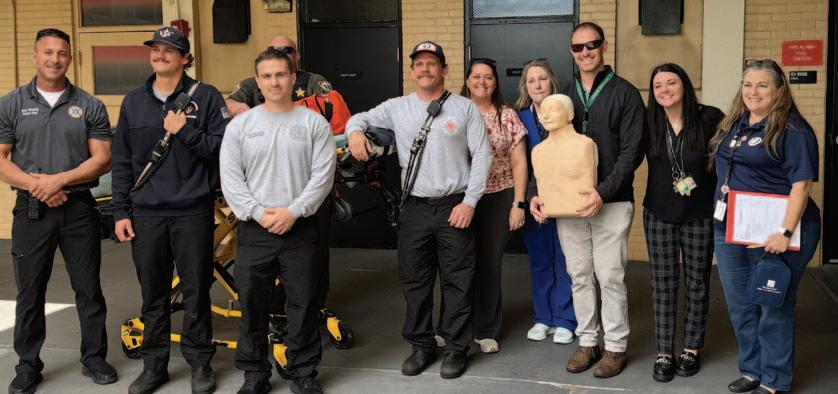
By Lisa Smith, Office of EMS
On January 28, 2025, crews from Brevard County Fire Rescue Station 43 participated in a mock Cardiac Arrest scenario with staff and students at Edgewood Jr. Sr. High School in Merritt Island. Crews were requested to be on standby across the street from the school as the stage was set with someone posing as the unresponsive patient. Upon coming across the “unresponsive person” student and faculty went through steps, alerting the staff, “calling 9-1-1” (staff called D40-A’s cellphone which was staged as 9-11), and starting the process of CPR while the defibrillator was retrieved and brought on scene. Students then learned how to place the defibrillator on a manikin’s torso and were talked through the instructions how the defibrillator operates. Crews were then cued to arrive on scene to assess the “unresponsive person”. The reason for this mock scenario was to bring attention to the students the importance of learning CPR and what to do in case of coming across a person going through a cardiac arrest event.

By Mount Dora Fire Department
The Mount Dora Fire Department (MDFE) proudly took part in the 5th Annual Tri-City Fire Department Food Drive Challenge on Saturday, Januar y 25, 2025. This friendly competition between Mount Dora, Eustis, and Tavares not only fosters community spirit but also supports the Lake Cares Food Pantry in its mission to help those in need.
To boost participation, MDFE got creative, organizing a “Battle of the Grades” among local schools to inspire donations. A big congratulations to the 2nd grade class at Triangle Elementary, which collected the most food and was rewarded with a pizza party, generously hosted by the Mount Dora Professional Firefighters Local 3088.
In an impressive effort, Mount Dora Fire Department secured 2nd place in the challenge, contributing a remarkable 3,837 pounds of food.
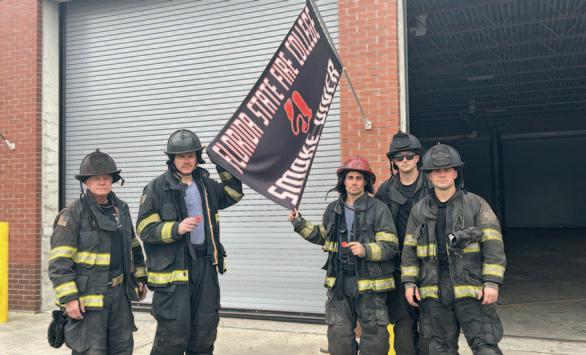
By Melbourne Fire Department
Congratulations to Lt. Tony Mauro and Firefighter Zac James of the Melbourne Fire Department for being the only two individuals complete the 2025 Smoke Divers course. Pictured, left to right, Instructor Chief Payton Jones, Firefighter Zac James, Lt. Tony Mauro, Instructor DM Patrick Milbocker and Instructor Steve White.
By Lucas Smith, Battalion Chief
In the early morning hours of July 19, 2024, units from the West Battalion of St. Johns County Fire Rescue responded to a structure fire in a local neighborhood. The event occurred during a massive IT outage related to an international software cyber-attack. Units responded without computer-aided dispatch or any of the technological advantages we've become accustomed to. The 3800-square-foot residence was heavily involved with flames visible from blocks away. In addition to the first arriving battalion chief, four companies arrived within the first 10 minutes of dispatch; placing two pre-connected attack lines and a master stream in service. Despite the volume of fire, the entire structure was aggressively searched simultaneously with attack efforts. The fire originated in the three-car garage, transitioning upwards into the second floor and large attic. Irreplaceable family heirlooms and property were saved by the initial companies' actions. The incident was a success due to the trust our crews have in each other and the countless hours we train to respond to the life-altering events of those we serve.
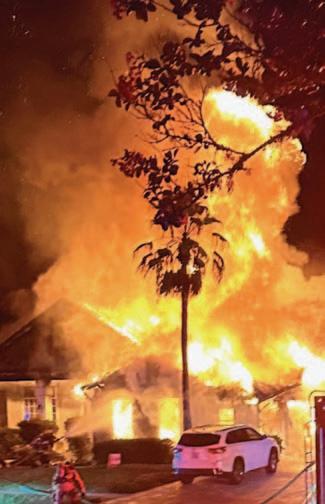
By Wendy Schaefer, Education & Awareness Manager, Sunshine 811
As Florida continues to experience unprecedented levels of excavation given the state’s top-rank for construction activity, the risks for damage to our fragile lifelines of underground utilities and more importantly, dangers to public safety, also grow exponentially.
April is Safe Digging Month. It’s an ideal time to work with and remind our enforcement partners – from fire departments to police and sheriffs to code enforcement –about their important role in ensuring compliance with Florida Statute 556 (a law created to protect our underground infrastructure and safeguard our citizens), including issuing citations to violators.
More than 73 underground utility lines are being hit each day in Florida, resulting in everything from outages, accidents, evacuations, injuries and billions in damages. Fire personnel have likely responded to incidents like these where crews or homeowners inadvertently damaged an underground gas line.
Among the biggest contributors of damage is work being done with hand tools. Utility lines can be shallow or entangled with roots, making any type of digging – whether with hand tools or backhoes – a greater risk for hitting those lines. We know that a greater understanding of how this affects your community can help in better enforcing the safe digging law.
According to the damage information reporting tool for Florida, the #1 cause of damage to underground facilities is failure to contact 811 before digging –a violation of state law. It carries fines of either $500 or $2,500 when gas facilities are involved. If a serious


incident occurs to underground lines transporting gas, flammable or toxic materials, those fines can be as high as $50,000.
Sunshine 811, a member of the Florida Fire Chiefs Association, is working to make Florida the safest place to dig. The organization connects excavators to utilities through a 24/7 online system and toll-free number so that buried lines can be appropriately marked. It also offers comprehensive educational resources on safe digging.
The organization’s goal is to help preserve public safety, protect underground infrastructure, and prevent damages or disasters from occurring. To accomplish this, Sunshine 811 works with dozens of organizations and partners throughout the state, including fire, police, sheriffs and code enforcement officers, to help ensure enforcement of Florida’s safe digging law.
New Resources & Tools for Fire Chiefs & Personnel
As part of this work, Sunshine 811 has several resources and new tools for fire chiefs and personnel:
Our education and safety liaisons are always available for one-on-one meetings, presentations and more. Reach out to your dedicated liaison, based on your geographic area: www.sunshine811.com/safety-ed-liaisons.
Our special Enforcement webpage provides a summary of the safe digging law, sample citation, examples of violations and more.
On this page you will also find brand new tools for fire chiefs and personnel, including an online course and video, as well as a way to register for a program to enable you to track potential violations and issue citations in the field. Go to: www.sunshine811.com/enforcement.
With Florida’s unprecedented levels of construction activity, enforcing the laws around safe digging and damage prevention to our underground utilities have never been more important. Sunshine 811 is proud to work alongside our enforcement partners to help ensure Florida is the safest place to dig.
